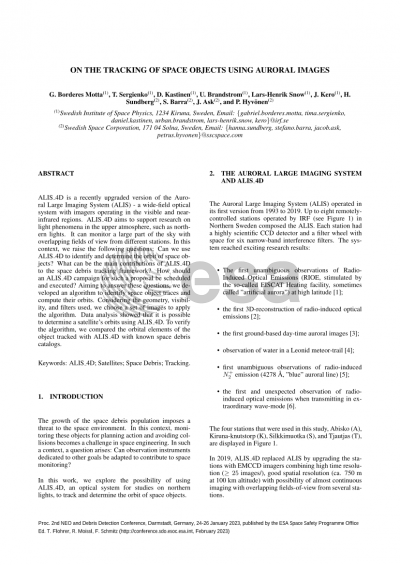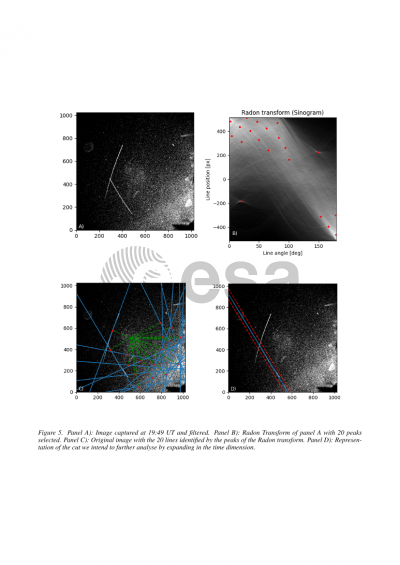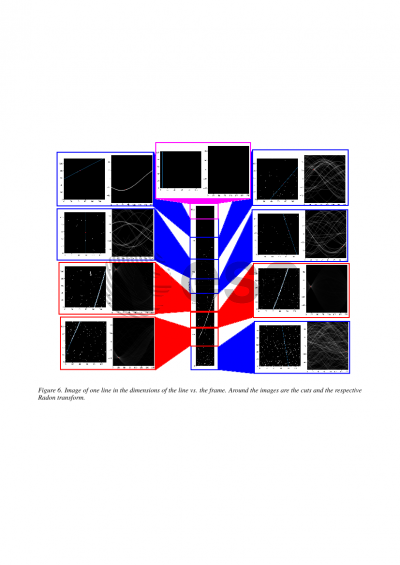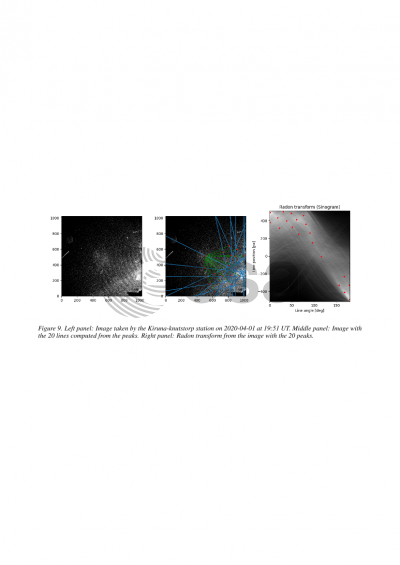Document details

Abstract
The Auroral Large Imaging System 4D (ALIS_4D) is a wide-field optical system with cameras operating in the visible and near-infrared regions. This system aims to support research on light phenomena in the upper atmosphere, such as northern lights. It can monitor a large part of the sky with overlapping fields of view from different stations. In this context, we raise the following questions: Can we use ALIS_4D to identify and determine the orbit of space objects? What can be the main contributions of ALIS_4D to the space debris tracking framework? How should an ALIS 4D campaign for such a proposal be scheduled and executed? Aiming to answer these questions, we developed an algorithm to identify space object traces and compute their orbits. Considering the geometry, visibility, and filters used, we choose a set of images to apply the algorithm. Data analysis showed that it is possible to determine satellite's orbits using ALIS_4D. To verify the algorithm, we compared the orbital elements of the object tracked with ALIS_4D with known space debris catalogs.
Preview









